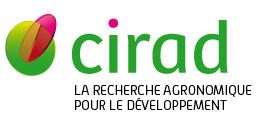Relationship between colouration and body condition in a crab spider that lures pollinators
Gawryszewski F.M., Llandres Lopez A., Herbestein M.E.. 2012. Journal of Experimental Biology, 215 : p. 1128-1136.
DOI: 10.1242/jeb.060558
Sit-and-wait predators have evolved several traits that increase the probability of encountering prey, including lures that attract prey. Although most crab spiders (Thomisidae) are known by their ability to change colour in order to match the background, a few use a different strategy. They are UV-reflective, creating a colour contrast against UV-absorbing flowers that is attractive for pollinators. The nature of the relationship between colour contrast and foraging success is unknown, as is how spiders trade off the potential costs and benefits of strong colour contrast. Therefore, this study investigated the relationship between spider colouration, foraging success and background colouration in a crab spider species known to lure pollinators via UV reflectance (Thomisus spectabilis). Field data revealed that spider body condition - a proxy of past foraging success - is positively related to overall colour contrast. We experimentally tested the effect of satiation and background colour on spider colour change. Throughout the experiment, spiders changed their colour contrast regardless of their food intake, suggesting that colour contrast and the UV component contributing to overall contrast are not caused by spider condition. Although spiders responded to different backgrounds by subtly changing their body colour, this did not result in colour matching. We believe that the observed variation in colour contrast and hence conspicuousness in the field, coupled with the spiders' reaction to our manipulation, could be the result of plasticity in response to prey.
Documents associûˋs
Article (a-revue û facteur d'impact)
Agents Cirad, auteurs de cette publication :
- Llandres Lopez Ana — Persyst / UPR AIDA
